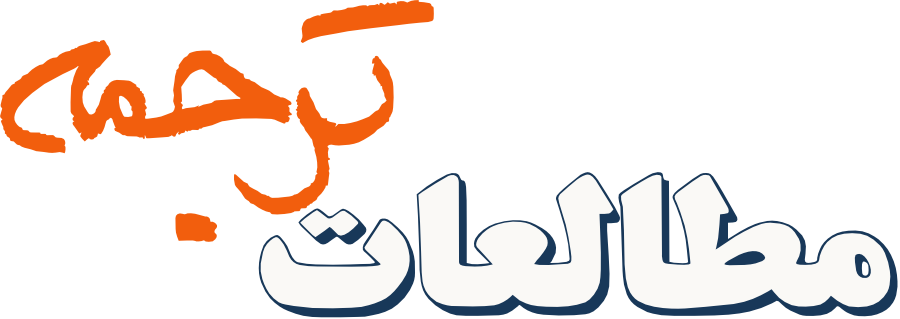یک مدل پیشنهادی بازروایت در ترجمه دیداری شنیداری
چکیده
مقالۀ حاضر با اتکا به نظریۀ روایت بیکر و مفهوم چندوجهی بودن، در صدد ارائه مدلی پیشنهادی برای بازروایت در ترجمۀ دیداریشنیداری است. با عنایت به ماهیت چندوجهی متون دیداری شنیداری و تعامل بین کانالهای کلامی و غیرکلامی، ترجمۀ دیداریشنیداری در ساخت واقعیت از سطح کانال کلامی فراتر میرود. معنا که از تعامل مابین این کانالها به دست میآید در زبان مقصد باز روایت میشود. روند بازروایت از فیلتر جایگاه روایی مؤسسه ترجمۀ دیداریشنیداری میگذرد. مؤسسه ترجمۀ دیداری شنیداری بهطرزی فعال در ساخت روایت در زبان مقصد شرکت میکند. بنابراین، بازروایت دیداری شنیداری نه تنها واقعیت را در زبان مقصد نمایان میکند بلکه آن را میسازد. مقاله همچنین فهرست جامعی از سی پایگاه را که روایت چندوجهی از آنها متجلی میشود بهدست میدهد. در نهایت، مقاله روایت چندوجهی را بهعنوان ابزاری تحلیلی برای متون دیداری شنیداری در سطح خرد کلامی و غیرکلامی معرفی و بررسی میکند.
کلمات راهنما:
ترجمۀدیداری شنیداری, بررسی روایت چندوجهی, چندوجهی بودن, بازروایت, پایگاه, نظریۀ روایتمراجع
Baker, M. (2006). Translation and conflict: A narrative account. Routledge.
Baker, M. (2007). Reframing conflict in translation. Social Semiotics, 17, 151¬¬–169.
Baker, M. (2010a). Narratives of terrorism and security: "Accurate" translations, suspicious frames. Critical Studies on Terrorism, 3(3), 347–364.
Baker, M. (2014). Translation as renarration. In J. House (Ed.), Translation: A multidisciplinary approach (pp. 158–177). Palgrave Macmillan.
Baker, M. (2016a). Narrative analysis. In C. V. Angelelli, & B. J. Baer (Eds.), Researching translation and interpreting (pp. 247–256). Routledge.
Baker, M. (2016b). The prefigurative politics of translation in place-based movements of protest: Subtitling in the Eqyption revolution. The Translator, 22(1), 1–21.
Baker, M. (2018). Narrative analysis and translation. In K. Malmkjær (Ed.), The Routledge handbook of translation studies and linguistics (pp. 179–193). Routledge.
Bruner, J. (1991). The narrative construction of reality. Critical Inquiry, 18(1), 1–21.
Chaume, F. (2004). Film studies and translation studies: Two disciplines at stake in audiovidual translation. Meta, XLIX(1), 12–24.
Delabastita, D. (1989). Translation and mass-communication: Film and TV translation as evidence of cultural dynamics. Babel, 35(4), 193–218.
Ewata, T. O. (2016). Meaning and nonverbal communication in films. Language and Linguistics: Perspectives from Nigeria, 3, 1–18.
Gambier, Y. (2006). Multimodality and audiovisual translation. In M. Carroll, H. Geryzmisch-Arbogast, & S. Nauret (Eds.), Audiovisual translation scenarios: Proceedings of the second MuTra Conference in Copenhagen 15 May. www.euroconferences.info/proceedings/2006_Proceedings/2006_Gambier_Yves.pdf
Gambier, Y., & Gottlieb, H. (2001). Multimedia translation: Concepts, practices, and research. John Benjamins.
Herman, D., Jahn, M., & Ryan, M. L. (2005). Routledge encyclopedia of narrative theory. Routledge.
Kress, G., & van Leeuwen, T. (2001). Multimodal discourse: The modes and media of contemporary communication. Hodder Arnold.
Mayoral, R., Kelly, D., & Gallardo, N. (1988). Concept of constrained translation. Non-linguistic perspectives of translation. Meta, 33(3), 356–367.
Somers, M. (1992). Narrativity, narrative identity, and social action: Rethinking English working-class formation. Social Science History, 16(4), 591–630.
Somers, M., & Gibson, G. (1994). Reclaiming the epistemological 'Other': Narrative and the social constitution of identity. In C. Calhoun, & C. Calhoun (Eds.), Social theory and the politics of identity (pp. 37–99). Blackwell.
Taylor, C. (2016). The mutimodal approach in audiovisual translation. Target, 222–236.
Thibault, P. (2000). The mutimodal transcription of a television advertisement: Theory and practice. In Baldry, A. (Ed.), Multimodality and multimediality in the distance learning age. (pp. 311–385). Palladino Editore.
Zabalbeascoa, P. (2008). The nature of audiovisual text and its parameters. In J. D. Cintas (Ed.), The didactics of audiovisual translation (pp. 21–37). John Benjamins Publishing Company.
چاپشده
ارجاع به مقاله
شماره
نوع مقاله
مجوز
Copyright Licensee: Iranian Journal of Translation Studies. This article is an open access article distributed under the terms and conditions of the Creative Commons Attribution–NonCommercial 4.0 International (CC BY-NC 4.0 license).





